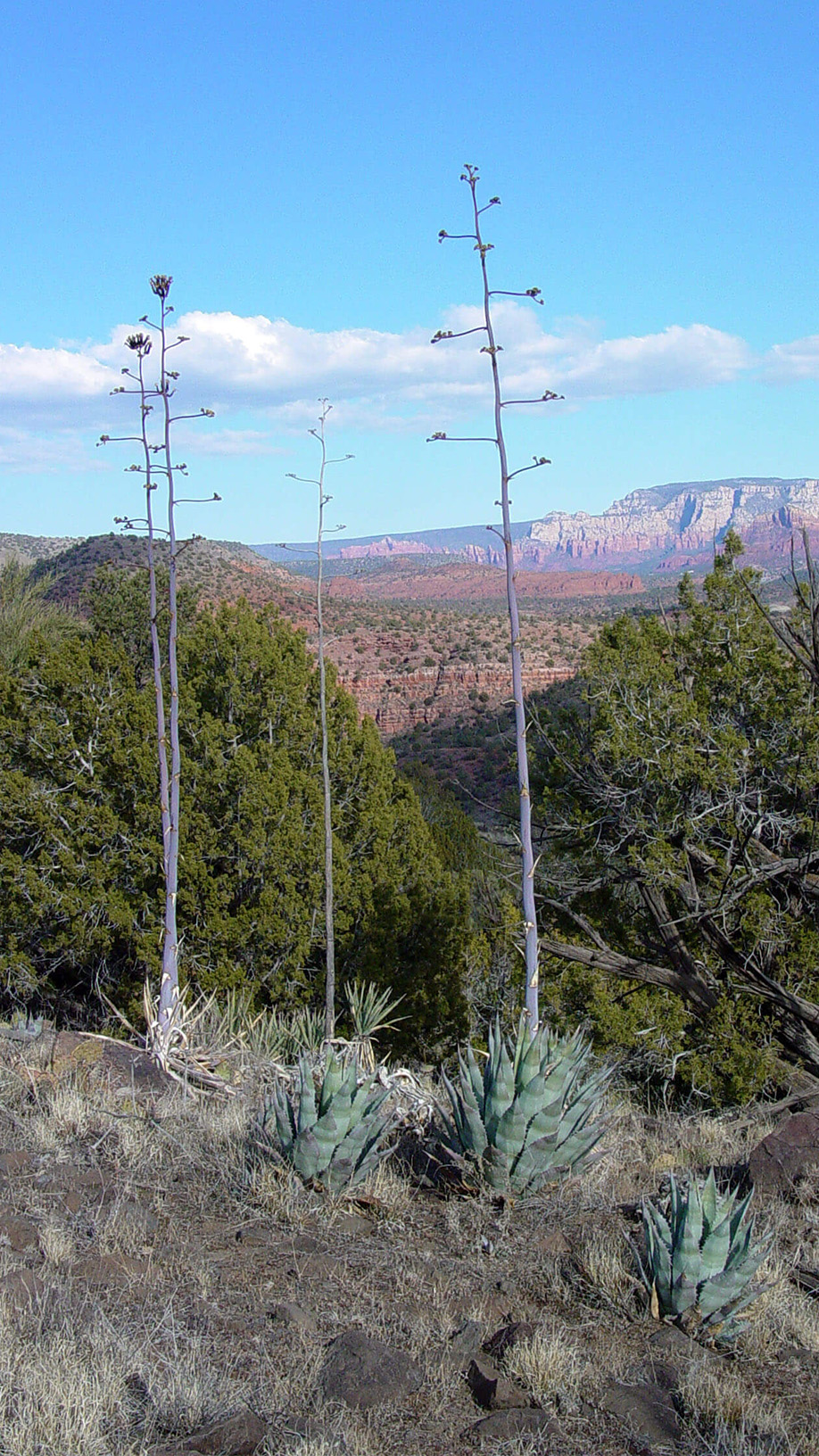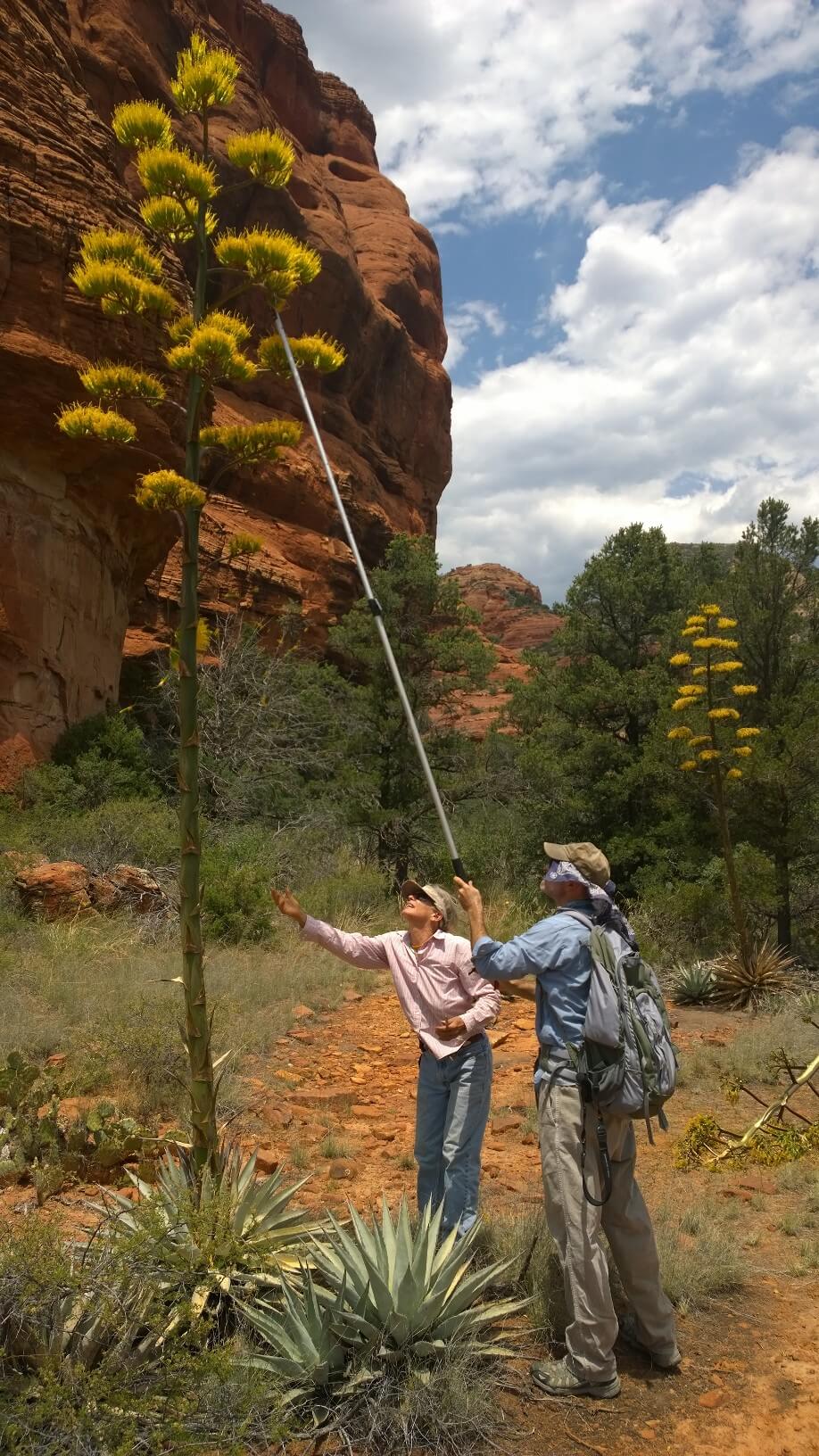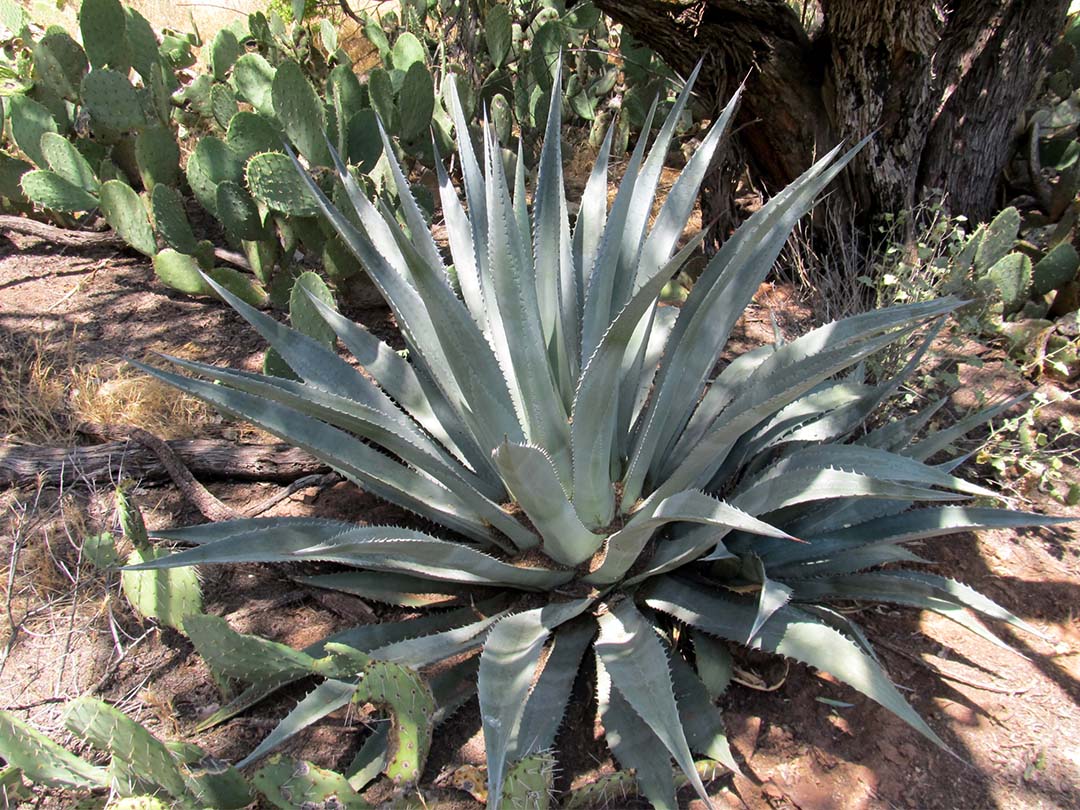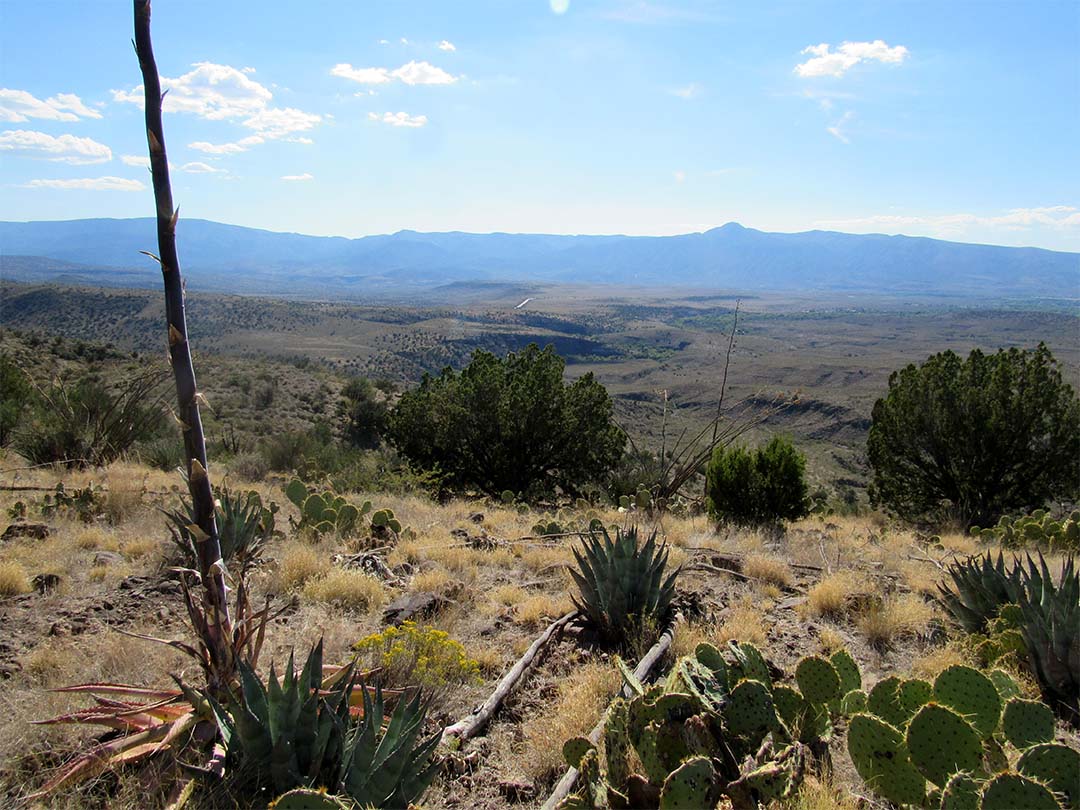In the paper, “Pre-contact Agave Domesticates—Living Legacy Plants in Arizona’s Landscape” published in the Annals of Botany, Garden researchers Wendy Hodgson, Andrew Salywon and volunteer Jane Rosenthal describe six rare domesticated agave species whose clones remarkably can still be found living in ancient agricultural fields in Arizona that have not been tended for hundreds of years. These findings present a rare opportunity to study domesticated plants virtually unchanged since they were last cultivated prehistorically by Native American groups in the Southwest— including the Hohokam people, a large Southwestern Native American group that existed between 300 and 1500 CE. The agaves are Agave murpheyi, A. delamateri, A. phillipsiana, A. sanpedroensis, A. verdensis and A. yavapaiensis.

Agave delamateri Sedona photo by Wendy Hodgson

Collecting agave, Sedona, photo by Steve Emrick
For thousands of years, agaves played a critical role in the economic and social fabric to both pre-contact and historic Mesoamerican cultures, providing food, fiber and cultivated for its use in beverages. However, the importance of agaves to indigenous peoples in the U.S. – Mexico border has been less known.
Archaeological research indicates the Hohokam and other pre-contact Southwestern cultures used numerous dry farming methods such as rock terraces and rock piles for cultivating agaves in this arid region.

Agave phillipsiana, Grand Canyon photo by Hodgson
Garden researchers have determined that the Hohokam and other pre-contact agriculturists cultivated no less than six and potentially eight or more domesticated agave species, especially after 1000 CE.
These discoveries underscore the need to view landscapes and some plant species from a cultural rather than “natural” perspective. Understanding how early cultures thrived in the arid Southwest is especially relevant at a time when Arizona and the Southwest continue to experience increasing drought and high temperatures.

Agave yavapaiensis in Page Springs photo by Hodgson
Protecting and understanding the distribution, ecological and cultural roles of these plants require interdisciplinary collaboration between botanists, archaeologists, federal agencies and Indigenous Peoples.
